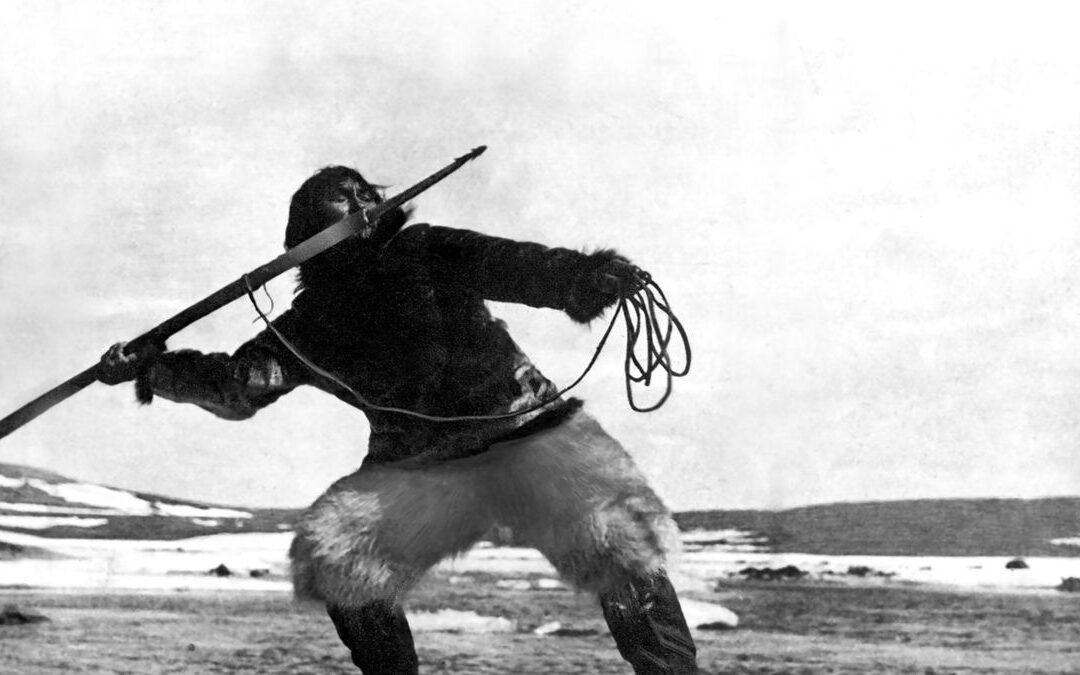Goodness me, where to begin? It is not often that I notice a masterpiece while I am watching it, but Nanook was just that. This was a documentary film made in the early 1920s, after two failed attempts in the 1910s. It follows Nanook, a master hunter in the Ungava region of Hudson’s Bay in Canada, and his family through their life in the Arctic wilderness.
Inuits from the Ungava region of Hudson’s Bay, Nanook, his wife Nyla and their infant son survive the Arctic wilderness by adhering to traditional methods of ice fishing, igloo building, and walrus, fox and seal hunting.
This is a black and white, silent 100 year old film. This is a hard sell for many but I tend to throw myself into films without much research. This movie, directed by Robert J. Flaherty, was the first commercially successful feature length documentary film. Flaherty followed Nanook and his family for one year and portrayed the most surprising and harsh episodes from the life of the family. We see their eating habits, hunting, sleeping habits and even their building of an igloo. The film is silent but for some music, though I have seen some showings available with live music. This must be quite an experience!
Flaherty consciously selected his cast and suggested episodes to convey the harshness of Nanook’s struggle with his forbidding environment. But rather than breaking the rules of the still-undefined documentary tradition, Flaherty worked according to the principles of Inuit art, by which the spirit of an artefact emerges during its creation and not as the result of some preconceived design. Consequently, this remains a remarkable piece of film-making and humanist anthropology… Empire
Why do I like this film? I have read and can dismiss some of the critics’ concerns about the family’s clothing being old, the igloo being too large (to accommodate for the cameras) and the selected episodes chosen to convey some drama. However, in spite of this, I believe this to be a relatively faithful portrayal of a family’s life. Indeed, some of the members of Nanook’s family ended up helping the camera crew, manning cameras and fixing some of the tripod legs as filming went on. I was moved by the lengths to which Nanook would go to protect his family and provide for them in the almost un-livable wasteland they inhabited. The ingenuity of the Inuit methods of survival are such that at points I could not quite believe what I was watching. Overall this was a very impressive and moving portrayal of a family living in impossible conditions, and, as the director notes in the opening slides, being among the happiest people in the world in so doing.
Please do watch this film. It is on Youtube for free.

